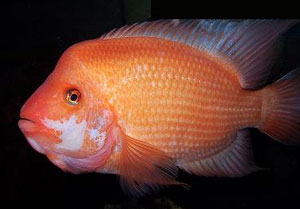Sex Determination in Fishes
Biology 342 Fall 2007
Authors: Candace Kam, Ben Kessler & Xeno Acharya
Phylogeny
What is Phylogeny?
Phylogeny refers to the evolution of an organism's traits, be they behavioral, anatomical, etc. The history of a given phenotype can be explored to see what changes in form and function an organismal lineage has gone through as times and conditions have changed.
Adaptive Radiation
Cichlids are a good example of adaptive radiation because of the many adaptive changes that they exhibit in a relatively short evolutionary period. The small population sizes of Cichlids allows for genetic drift which can cause the Y chromosomes to be likely to have deleterious alleles. Thus, speciation occurs faster in accordance with the above mechanism for speciation. It has been shown that in large populations of cichlids such as the tilapiine Cichlids, speciation is much slower. This is because the YY progeny are much more viable since there is less likelihood that the Y chromosomes have deleterious alleles.
Sex Determination
There are many different factors that affect sex differentiation in different species of cichlids. Some species have genetic sex determination and do not have the ability to change sex. Some other Cichlids have sex determination during the larval stage that include temperature and pH factors. Lastly, sex determination in other species involves the social interaction between Cichlids.
Sex Reversal and Color
A Sex-reversal gene known as W is linked to the Y chromosome. Because the W gene causes femaleness, the WY females who mate with XY males have less fit progeny due to the presence of some YY progenies which have deleterious alleles. Thus, the presence of the W gene is not spread to fixation. In addition to this model, there is a W’ sex-linked allele which is a gene for novel color. When you have a Cichlid with a W’ allele present, the novel color initially has mating preference opposing it. However, when a novel allele, called a c allele, is present, the Cichlids with this allele actually favor the new color. Thus, there is a new pool of Cichlids established which have the c allele. This preference from color distinguishes and isolates the Cichlids which have the c allele from the Cichlids which have C (favoring absence of color) alleles. Thus, two species are sexually isolated and speciation occurs rapidly.
A Diversity of Pathways
Because Cichlids are one of the fastest evolving species, it is understandable that so many different pathways to sex determination have evolved. Some of these pathways are based on pH, temperature, social interaction, and of course a genetic basis.
For More Information
See Lande et. al., from which we garnered the above information, here:
http://www.springerlink.com/content/q63777pq170k3518/